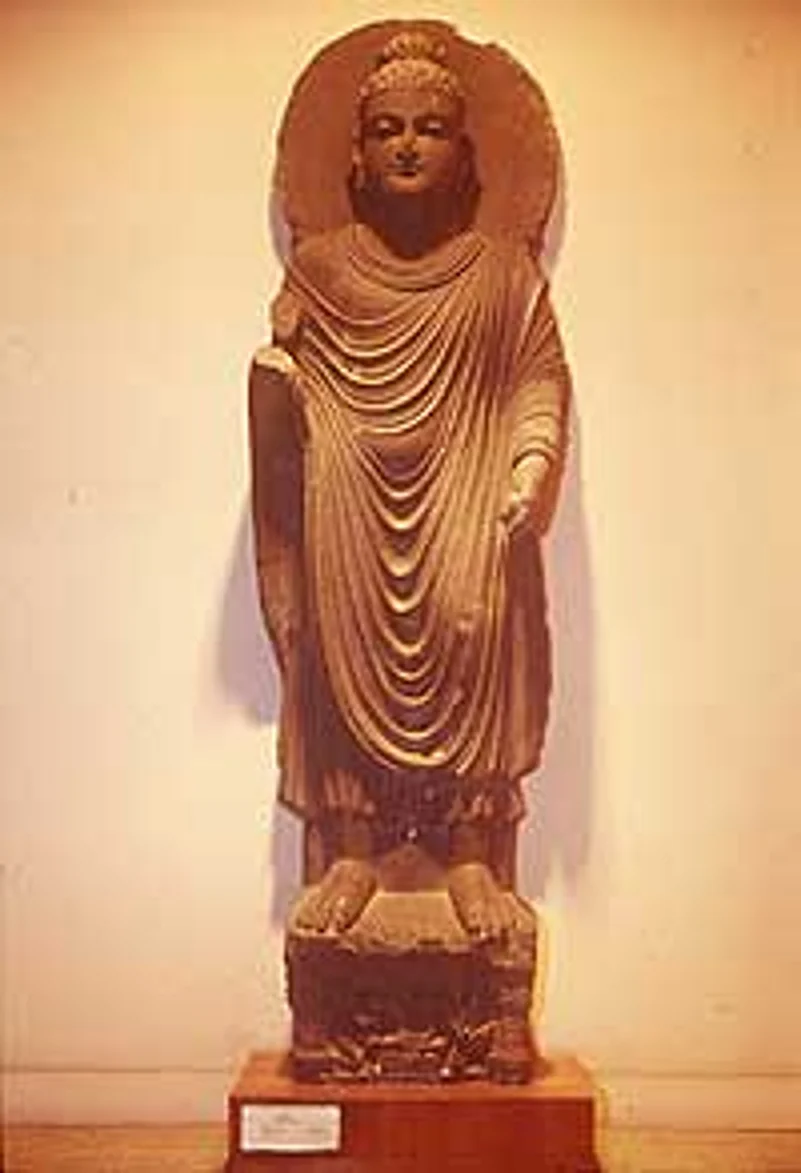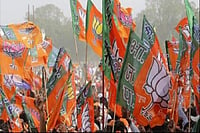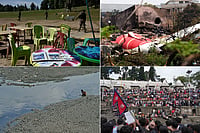- A CBI probe at the Indian Museum in Calcutta has revealed shocking irregularities
- Many priceless objects are missing, suspected to have been sold to foreign antique smugglers
- Objects purchased by the museum for huge sums have been found to be recently-made fakes
- Large-scale corruption found in the purchase of security equipment
- The CBI probe was ordered at the urging of West Bengal Governor Gopal Gandhi
***

| Priceless objects like this are missing |
The mess at the museum, known to its employees all these years, came to light with the disappearance of a seventh century sandstone bust of the Buddha from a glass case at the archaeology gallery on December 29, 2004. After this apparent theft, huge sums were sanctioned by the Union ministry to upgrade security at the museum and to prepare a comprehensive inventory of the four million-odd artifacts, of which only about a million are displayed in the museum's 22 galleries. "This was when the misappropriation of funds started. Notices inviting tenders for equipment like walkie-talkies, metal detectors and other equipment were printed in little-known periodicals, fake companies were floated overnight to submit bids, and contracts were awarded to them. For instance, walkie-talkies that cost about Rs 7,000 each were purchased for Rs 47,500. Defective, substandard and even old, hand-held and door-frame metal detectors were procured at many times the standard rates," an officer of the CBI's anti-corruption branch that conducted the inquiry told Outlook. Similarly, close-circuit TVs and computers were procured at more than five times their actual cost. Incidentally, most aren't working now.
It was only after some upright employees of the museum had complained about these irregularities to Bengal Governor Gopalkrishna Gandhi—chairman of the museum's board of trustees—that the CBI was asked to investigate the charges. But the litany of shameful disclosures doesn't end here. The cag report for 2006-07 speaks of gross irregularities in the printing of the museum's publications. Over 5,000 valuable books published by the museum are unaccounted for. The cag report strongly criticised the museum's publications section for the poor quality of printing that has led to a decline in the sale of these tomes. An internal inquiry also found some Group D staff guilty of palming off fake currency notes to unsuspecting visitors, mostly foreigners, from the ticket counter. "There's corruption at all levels and the museum has become the den of rackets. Till even a few months ago, outsiders used to be ushered in through the back gate after dusk and the galleries used to be opened for them. They used to be taken to the vaults by senior officers. We suspect many priceless objects were smuggled out by them in connivance with our senior officers," a museum officer told Outlook.
The CBI probe revealed that some senior officers of the museum had amassed huge properties. The agency's sleuths found Rs 1 crore in cash at the residence of the former keeper of the museum's anthropology gallery. The design and drawing officer—suspended earlier this month—had recently purchased 3.25 hectares of land in the city's suburbs. "Inflated travel bills were submitted by senior officers. One of them was found to have travelled nearly 100 km a day for almost one whole year," the CBI officer said. "We've received some new leads on the Buddha bust disappearance case that we had probed, but had closed since we didn't make any headway. We're now thinking of reopening it. We've uncovered evidence of links between some senior museum officers and well-known international antique smugglers," a senior CBI officer told Outlook.
The audit of the museum's possessions was ordered by the Union culture ministry after receiving complaints from some employees about missing artifacts. "The audit of all objects is still on and till it's complete, we can't say anything. But so far, no artifact has been reported missing after I assumed charge," said the Indian Museum's acting director, C.R. Panda. He declined to comment on the CBI probe and the cag report. Panda is technically correct: all anomalies and disappearances occurred during the tenures of his predecessors, Shyamal Chakraborty and Shakti Kali Basu. "Though we'll know for sure what is missing only after this audit is completed, we've obtained a fair idea of objects that have disappeared. For instance, figurines and sculptures of the Indus valley civilisation haven't been found where they were stored. They couldn't have been relocated elsewhere," said the museum officer.
Shockingly, senior officers used to remove priceless relics from the galleries and display them in their chambers and, if some employees are to be believed, in their homes as well. Twenty antiques were recovered from the locker in the deputy director's chamber after she retired recently. Furthermore, the ongoing audit has revealed that many invaluable objects have been totally or partially damaged due to the careless fashion in which they had been stored in the museum's vaults. The museum's website proudly claims that it is the repository of the largest collection of museum objects in India. That reputation now looks set to be overturned by its new notoriety—as the prime lair of corrupt and unscrupulous custodians of our historical and cultural heritage.






















